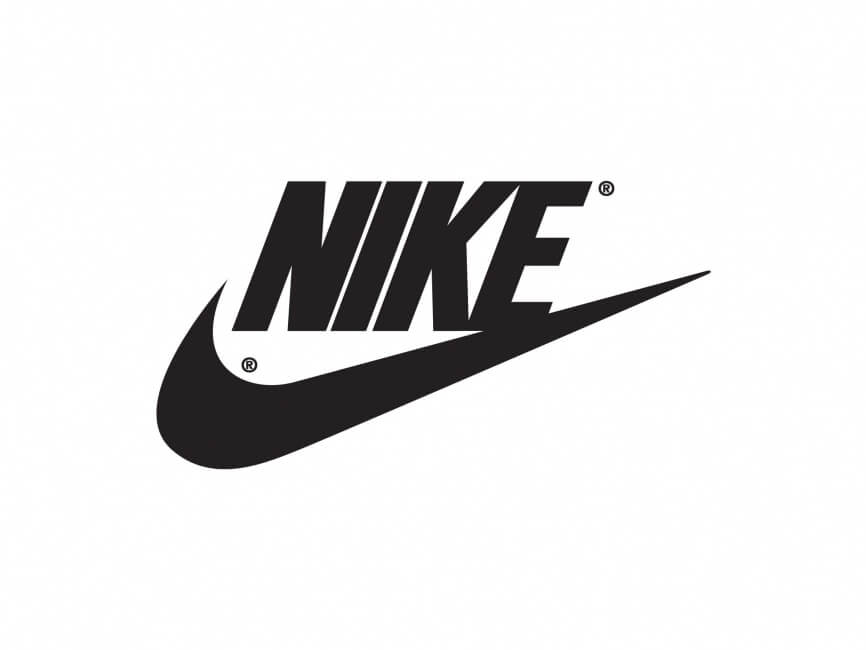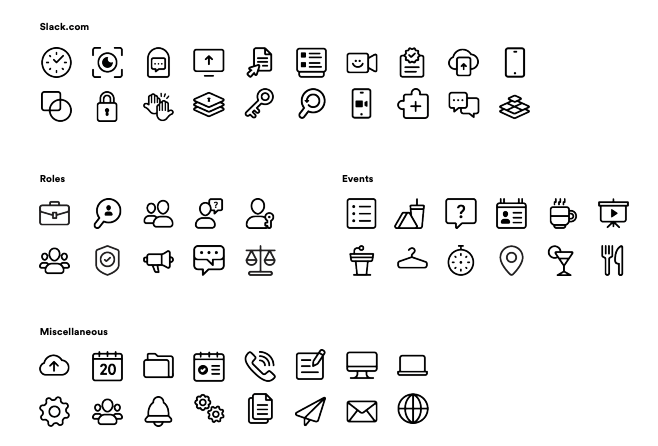Whether you’re a marketer, entrepreneur, business owner or just interested in understanding the essence of effective branding, join us as we delve into the pivotal role of brand assets in shaping perceptions and achieving business success. We will discuss the following:
- What is a Brand Asset?
- Visual Brand Assets
- Non-visual Brand Assets
- Importance of Brand Assets
- Challenges & considerations
What is a Brand Asset?
A Brand Asset is a distinctive element closely associated with a company’s identity, essential for setting it apart from competitors. These assets play a critical role in brand differentiation and recognition. They enable customers to easily identify and distinguish your brand from others in the market. Let’s dive deeper into what constitutes these pivotal brand assets.
Visual Brand Assets
Since sometimes it is easier to understand by seeing, we will be providing various examples throughout this blog to further explain the different brand assets.
Logo
This Brand Asset is probably the most common and the most recognizable element of a brand. It should be unique to your company and can be used on any type of marketing materials and campaigns. A logo is a symbol or design that is used to identify an organization. It helps create emotional connections with customers.
Whether you just see the iconic swoosh or the entire logo, it’s pretty easy to note that this is the well known sports apparel brand. The logo is all you need to know if an article of clothing or product is made by them.
Color palette
This is an easily noticeable brand asset (aside from the logo), however tends to be an element that can also be easily overlooked in consistency. Colors help audiences form early opinions – think about the psychology behind each color that is chosen. If you want to learn more about color psychology check out our blog that discusses it in further detail!
Without us telling you, who do you think that the below color palette belongs to? If you thought Starbucks, then you’re correct! The strategic selection of colors can evoke specific emotions and associations, creating a distinct personality for the brand. Consistency in color usage across all brand elements—from logo and packaging to marketing materials—enhances brand recognition and fosters a cohesive brand identity. Ultimately, a well-chosen color palette not only differentiates a brand in a crowded market but also builds a lasting connection with its audience through visual storytelling.
Typography
Legibility is critical in this part as it helps communicate branded messages consistently to various audiences. It’s also a great way to build that brand consistency overall by having a set typography. Find a font that is easy to read and matches the brand personality but is still easy to read. Additionally, you can consider adding a secondary font that is used more sparingly to add a little more variety. If you want to learn more about typography check out our typography blog post!
Mailchimp provides great insight on their typography. The main font you see and know when you think of Mailchimp is their brand typeface called Means. Mailchimp states that this font has a “quirky warmth and projects trustworthiness, optimism and sincerity.” Their supporting font is called Graphik, this font works well with Means but it is purposefully more plain than the brand typeface allowing the brand typeface to shine and be used in a more impactful way.
Iconography/Illustrations & Photography
Branded visuals encourage consistency across platforms and connect all campaigns and projects. Ensuring that your visual elements, both icons and photography used feel like they belong in the same family is a great way to keep that brand consistency.
Illustrations & icons:
Slack does a great way to showcase its style and have their icons and illustrations feel like they are part of the same family making it more easily recognizable that the assets belong to Slack. In Slacks brand guidelines, they state that their illustration style is “bold, elevated, and dimensional” with a great use of negative space. Meanwhile, their icons remain simplistic yet effective.
Photography:
Brands typically use a combination of icons/illustrations and actual photography to showcase their products and elevate their brands in various ways. Within photography, subtle pieces such as lighting, shadows, angles and compositions can impact your brand-consistency greatly. Keeping Slack in mind for this example, their photography aims to be relatable yet aspirational. The avatars are described as “relatable, human, warm and quirky yet mature and personable”. The still life photography remains simple and clear. Finally, the lifestyle photography they use feeds right back into their aspirational goals and remains focused and inclusive (the subject is a part of something larger). For more details check out their brand guidelines!
Non-visual Elements:
Brand Voice
Communication is crucial for any brand, with the tone and style being key components that must align with the brand’s identity and values. A serious brand shouldn’t adopt a comedic or sassy voice, as it would undermine its credibility. It’s essential to consider the demographics of each platform and tailor communication accordingly while maintaining consistency with the overall brand voice. The brand voice encompasses the personality and tone used consistently across all messaging, reflecting the brand’s values and resonating with its audience. Whether formal, friendly, or playful, a well-defined brand voice fosters familiarity and trust, facilitating meaningful connections with customers and supporting the brand’s strategic objectives.
Website
Your website is more than a landing page, it’s the digital home of your business, playing a pivotal role in shaping perceptions and driving engagement. It also communicates your brand identity and values to visitors. The design, navigation, and content of your website should align seamlessly with your brand’s visual elements, voice, and messaging. Considerations include ensuring the website reflects the same tone and style as your other brand assets, creating a cohesive brand experience.
Remember, functionality and user experience are equally important; a well-structured and intuitive website enhances usability and encourages visitors to explore further, ultimately supporting conversions and customer retention. Regular updates and maintenance are essential to keep the website current and reflective of any changes in your brand strategy or offerings. By leveraging your website as a strategic brand asset, you can effectively reinforce brand identity, build credibility, and foster meaningful connections with your audience.
Tagline or catchphrase
Taglines and slogans are concise yet powerful statements that encapsulate the essence of a brand’s identity and values. They serve as memorable hooks that resonate with consumers, reinforcing brand messaging and creating lasting impressions. A well-crafted tagline or slogan can evoke emotions, convey brand promises, and differentiate the brand from competitors in a crowded marketplace. Examples like Nike’s “Just Do It” or McDonald’s “I’m Lovin’ It” demonstrate how effective taglines can become ingrained in popular culture while solidifying brand identity. Crafting a compelling tagline requires a deep understanding of the brand’s mission and target audience, ensuring it resonates and remains relevant over time.
Bonus if you have an product based business: Product packaging
Product packaging presents an additional opportunity to enhance visibility and foster brand associations. It’s crucial that the packaging aligns with your brand’s personality and positioning. Take a makeup brand, for example: you can opt for extravagant and bold packaging or choose a minimalist design. What matters most is that the packaging resonates with the overall brand identity.
Importance of Brand Assets
Brand assets are crucial components that contribute significantly to the overall success and recognition of a brand. Here’s why they are important:
Enhancing Brand Recognition and Recall (and Ultimately Trust):
Consistent use of brand assets such as logos, colors, and typography helps consumers quickly identify and remember your brand amidst competitors. This familiarity builds trust and encourages repeat engagement. When customers consistently encounter cohesive brand elements, they develop a sense of reliability and authenticity, leading to long-term relationships.
Differentiating the Brand:
In a competitive market, distinct brand assets set your brand apart from others offering similar products or services. They communicate unique aspects of your brand’s personality and values, making it easier for consumers to choose your brand over others.
Facilitating Brand Expansion and Adaptation:
As brands evolve and expand into new markets or product lines, strong brand assets provide continuity and coherence. They help maintain brand identity while adapting to new contexts and audiences, ensuring seamless integration and recognition.
Measuring Brand Equity:
Brand assets contribute to the overall brand equity, which is a measure of the brand’s perceived value and strength in the market. Consistent and effective use of brand assets can enhance brand equity over time, driving business growth and competitive advantage.
By understanding and leveraging the importance of brand assets, businesses can effectively build and sustain a strong brand presence that resonates with their audience, fosters loyalty, and drives success in the marketplace.
Challenges and Considerations with Brand Assets
Navigating the development and maintenance of brand assets comes with its own set of challenges and considerations:
Maintaining Consistency:
One of the biggest challenges is ensuring consistency across all brand assets. Variations in design, messaging, or tone can dilute brand identity and confuse consumers. It requires strict adherence to brand guidelines and regular audits to maintain uniformity.
Adapting to Change:
Brands often face the challenge of evolving their brand assets to stay relevant in a dynamic market. Balancing continuity with the need for adaptation can be tricky, requiring thoughtful updates without losing brand equity or recognition.
Legal and Trademark Issues:
Securing trademarks and ensuring legal compliance for brand assets is essential but can be complex. Brands must navigate copyright laws, trademark registrations, and potential infringements to protect their assets and avoid legal disputes.
Managing Multiple Channels:
With the proliferation of digital platforms and channels, maintaining brand consistency across all touchpoints can be challenging. Each channel may have different requirements and formats, necessitating flexible but consistent application of brand assets.
Budget Constraints:
Developing and managing brand assets can be resource-intensive. Budget constraints may limit the scope of asset creation or updates, requiring prioritization and creative solutions to maintain brand integrity.
Addressing these challenges requires strategic planning, clear communication, and a commitment to upholding brand standards. By proactively managing these considerations, brands can strengthen their identity, enhance customer trust, and drive sustained success in the marketplace.






